Brownstone Institute
During the Crisis, Free Speech Worked Brilliantly
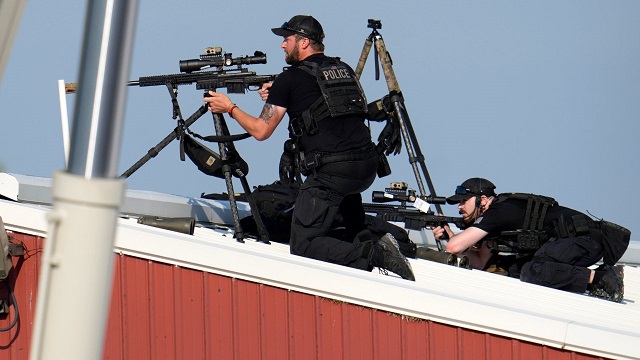
From the Brownstone Institute
The free platform proved itself capable of quick course correction alongside maximum agility in processing the floods of constant new information. Meanwhile, the venues in which “misformation” has been anathematized ended up being the major source of exactly that.
There is only one major social media platform that is relatively free of censorship. That is X, once known as Twitter, and owned by Elon Musk, who has preached free speech for years and sacrificed billions in advertising dollars in order to protect it. If we don’t have that, he says, we lose freedom itself. He also maintains that it is the best path to finding the truth.

The crisis that broke out after the attempt on Donald Trump’s life put the principle in motion. I was posting regular updates and never censored. I’m not aware of anyone who was. We were getting second-by-second updates in real time. The videos were flying along with every conceivable rumor, many false and then corrected, alongside free speech “spaces” in which everyone was sharing their views.
During this time, Facebook and its suite of services fell silent, consistent with the new ethos of all these platforms. The idea is to censor all speech until it is absolutely confirmed by officials and then permit only that which is consistent with the press releases.
This is the habit born of the Covid years, and it stuck. Now all the platforms avoid any news that is fast in motion, except to broadcast precisely what they are supposed to broadcast. Maybe that works in most times when people are not paying attention. Readers do not know what they are missing. The trouble was that during these post-shooting hours when nearly everyone on the planet wanted updates, there were no press releases forthcoming.
By habit, I reached for what was once called television. The networks had plenty of talking heads and newscasters with their usual eloquence. What was missing from all the broadcasts that I saw in these hours were any factual updates. They too were waiting for confirmation of this or that before putting out any information at all beyond the basics. They let their “experts” speak as long as possible just to waste time before rolling out new advertisements.
Over time, I realized something. X was driving the whole of the news, while the newscasters had to wait for permission before reading scripted lines.
Meanwhile, on X, the situation was utterly wild. Posts were flying fast and furious. New rumors would circulate (the shooter’s name and affiliations, stories about a second shooting, claims that Trump was hit in the chest, and so on). But shortly after the rumor circulated, so did the debunking. The feature called “Community Notes” kept the faulty news in check, while the truth gradually circulated to the top. This happened on topic after topic.
The wildest theories ever were permitted to appear, while others would debunk them with reasoned arguments. The readers could decide for themselves. You could see how the seeming chaos gradually organized itself into communities seeking verification. Posters grew ever more careful about posting claims that could not be verified, or at least explaining what they were.
X was single-handedly holding the whole of the corporate media to account, and reporters and editors very obviously came to depend on their X feeds to figure out what to say next. It was the same with newspapers. When NYT, CNN, WaPo, and so on would make major missteps, posters on X would call them out, the word would reach the editors, and the headline or story would change.
In the end, X became the one place where you could find the fullness of truth. All the while, the old-world media was dishing out the most ridiculous headlines one could imagine. For many hours, the New York Times, CNN, Washington Post, and other such venues refused to say it was an assassination attempt on Trump. The headline led people to believe that this was a MAGA rally with some random shooters that got carried away and so Trump had to be ushered out. This really did happen, and readers were outraged.
CNN was probably the worst offender, with the following headline: “Secret Service Rushes Trump Offstage As He Falls at Rally.”
It took many hours and repeated attempts but eventually the mainstream media finally said that the incident was “being investigated” as an assassination attempt, even though it was very obvious that it was an attempt on his life that he barely survived with the slight turn of his head.
It was the kind of flurry of nonsense that further discredited the old corporate media right there in front of an entire planet that was no longer believing anything they said.
It’s hard to know why the corporate press did this. Were they just cautious and worried about misinformation? If so, how come so many of their headlines were of the same sort, that which refused to say that someone just tried to kill Trump? Were they just in the habit of waiting for officials to tell them what to say? Was it raw TDS that was driving this? It’s hard to know but the failure was conspicuous and obvious to all.
What stood out above all else was the way free speech on X worked to ferret out the real story, while actually driving forward the mainstream press to correct its errors and get the story right. One shudders to think how it would have all taken place in absence of this one platform, which became the go-to place for everyone. The most important lesson: free speech worked. And beautifully.
All Western societies are currently struggling with the question of just how much speech to allow on the Internet. The trajectory for years now has not been a good one. Once-free platforms have become more frozen, more propagandistic, more staid, and duller, even as this one platform has created a culture of freedom combined with community-driven accountability.
This freedom accomplished exactly what it was supposed to accomplish, while the censored platforms held onto misinformation much longer than they should have been.
Which makes the point. Too often, the battle over free speech is framed as misinformation/freedom vs. facts/truth/restriction. The very opposite has proven to be the case. The free platform proved itself capable of quick course correction alongside maximum agility in processing the floods of constant new information. Meanwhile, the venues in which “misformation” has been anathematized ended up being the major source of exactly that.
Freedom works. As messy as it is, it works better than any other system. Meanwhile, governments of the world have targeted X for destruction. Advertisers continue to boycott and regulators continue to threaten.
So far, it has not worked and thank goodness. But for X, the last 24 hours would have looked very different: nothing but propaganda, apart from a few marginal places here and there. Therein lies another irony: the way X is managed is increasing trust rather than reducing it.
The lesson should be obvious. The answer to the problems of free speech is more of it.
Brownstone Institute
Bizarre Decisions about Nicotine Pouches Lead to the Wrong Products on Shelves

From the Brownstone Institute
A walk through a dozen convenience stores in Montgomery County, Pennsylvania, says a lot about how US nicotine policy actually works. Only about one in eight nicotine-pouch products for sale is legal. The rest are unauthorized—but they’re not all the same. Some are brightly branded, with uncertain ingredients, not approved by any Western regulator, and clearly aimed at impulse buyers. Others—like Sweden’s NOAT—are the opposite: muted, well-made, adult-oriented, and already approved for sale in Europe.
Yet in the United States, NOAT has been told to stop selling. In September 2025, the Food and Drug Administration (FDA) issued the company a warning letter for offering nicotine pouches without marketing authorization. That might make sense if the products were dangerous, but they appear to be among the safest on the market: mild flavors, low nicotine levels, and recyclable paper packaging. In Europe, regulators consider them acceptable. In America, they’re banned. The decision looks, at best, strange—and possibly arbitrary.
What the Market Shows
My October 2025 audit was straightforward. I visited twelve stores and recorded every distinct pouch product visible for sale at the counter. If the item matched one of the twenty ZYN products that the FDA authorized in January, it was counted as legal. Everything else was counted as illegal.
Two of the stores told me they had recently received FDA letters and had already removed most illegal stock. The other ten stores were still dominated by unauthorized products—more than 93 percent of what was on display. Across all twelve locations, about 12 percent of products were legal ZYN, and about 88 percent were not.
The illegal share wasn’t uniform. Many of the unauthorized products were clearly high-nicotine imports with flashy names like Loop, Velo, and Zimo. These products may be fine, but some are probably high in contaminants, and a few often with very high nicotine levels. Others were subdued, plainly meant for adult users. NOAT was a good example of that second group: simple packaging, oat-based filler, restrained flavoring, and branding that makes no effort to look “cool.” It’s the kind of product any regulator serious about harm reduction would welcome.
Enforcement Works
To the FDA’s credit, enforcement does make a difference. The two stores that received official letters quickly pulled their illegal stock. That mirrors the agency’s broader efforts this year: new import alerts to detain unauthorized tobacco products at the border (see also Import Alert 98-06), and hundreds of warning letters to retailers, importers, and distributors.
But effective enforcement can’t solve a supply problem. The list of legal nicotine-pouch products is still extremely short—only a narrow range of ZYN items. Adults who want more variety, or stores that want to meet that demand, inevitably turn to gray-market suppliers. The more limited the legal catalog, the more the illegal market thrives.
Why the NOAT Decision Appears Bizarre
The FDA’s own actions make the situation hard to explain. In January 2025, it authorized twenty ZYN products after finding that they contained far fewer harmful chemicals than cigarettes and could help adult smokers switch. That was progress. But nine months later, the FDA has approved nothing else—while sending a warning letter to NOAT, arguably the least youth-oriented pouch line in the world.
The outcome is bad for legal sellers and public health. ZYN is legal; a handful of clearly risky, high-nicotine imports continue to circulate; and a mild, adult-market brand that meets European safety and labeling rules is banned. Officially, NOAT’s problem is procedural—it lacks a marketing order. But in practical terms, the FDA is punishing the very design choices it claims to value: simplicity, low appeal to minors, and clean ingredients.
This approach also ignores the differences in actual risk. Studies consistently show that nicotine pouches have far fewer toxins than cigarettes and far less variability than many vapes. The biggest pouch concerns are uneven nicotine levels and occasional traces of tobacco-specific nitrosamines, depending on manufacturing quality. The serious contamination issues—heavy metals and inconsistent dosage—belong mostly to disposable vapes, particularly the flood of unregulated imports from China. Treating all “unauthorized” products as equally bad blurs those distinctions and undermines proportional enforcement.
A Better Balance: Enforce Upstream, Widen the Legal Path
My small Montgomery County survey suggests a simple formula for improvement.
First, keep enforcement targeted and focused on suppliers, not just clerks. Warning letters clearly change behavior at the store level, but the biggest impact will come from auditing distributors and importers, and stopping bad shipments before they reach retail shelves.
Second, make compliance easy. A single-page list of authorized nicotine-pouch products—currently the twenty approved ZYN items—should be posted in every store and attached to distributor invoices. Point-of-sale systems can block barcodes for anything not on the list, and retailers could affirm, once a year, that they stock only approved items.
Third, widen the legal lane. The FDA launched a pilot program in September 2025 to speed review of new pouch applications. That program should spell out exactly what evidence is needed—chemical data, toxicology, nicotine release rates, and behavioral studies—and make timely decisions. If products like NOAT meet those standards, they should be authorized quickly. Legal competition among adult-oriented brands will crowd out the sketchy imports far faster than enforcement alone.
The Bottom Line
Enforcement matters, and the data show it works—where it happens. But the legal market is too narrow to protect consumers or encourage innovation. The current regime leaves a few ZYN products as lonely legal islands in a sea of gray-market pouches that range from sensible to reckless.
The FDA’s treatment of NOAT stands out as a case study in inconsistency: a quiet, adult-focused brand approved in Europe yet effectively banned in the US, while flashier and riskier options continue to slip through. That’s not a public-health victory; it’s a missed opportunity.
If the goal is to help adult smokers move to lower-risk products while keeping youth use low, the path forward is clear: enforce smartly, make compliance easy, and give good products a fair shot. Right now, we’re doing the first part well—but failing at the second and third. It’s time to fix that.
Addictions
The War on Commonsense Nicotine Regulation

From the Brownstone Institute
Cigarettes kill nearly half a million Americans each year. Everyone knows it, including the Food and Drug Administration. Yet while the most lethal nicotine product remains on sale in every gas station, the FDA continues to block or delay far safer alternatives.
Nicotine pouches—small, smokeless packets tucked under the lip—deliver nicotine without burning tobacco. They eliminate the tar, carbon monoxide, and carcinogens that make cigarettes so deadly. The logic of harm reduction couldn’t be clearer: if smokers can get nicotine without smoke, millions of lives could be saved.
Sweden has already proven the point. Through widespread use of snus and nicotine pouches, the country has cut daily smoking to about 5 percent, the lowest rate in Europe. Lung-cancer deaths are less than half the continental average. This “Swedish Experience” shows that when adults are given safer options, they switch voluntarily—no prohibition required.
In the United States, however, the FDA’s tobacco division has turned this logic on its head. Since Congress gave it sweeping authority in 2009, the agency has demanded that every new product undergo a Premarket Tobacco Product Application, or PMTA, proving it is “appropriate for the protection of public health.” That sounds reasonable until you see how the process works.
Manufacturers must spend millions on speculative modeling about how their products might affect every segment of society—smokers, nonsmokers, youth, and future generations—before they can even reach the market. Unsurprisingly, almost all PMTAs have been denied or shelved. Reduced-risk products sit in limbo while Marlboros and Newports remain untouched.
Only this January did the agency relent slightly, authorizing 20 ZYN nicotine-pouch products made by Swedish Match, now owned by Philip Morris. The FDA admitted the obvious: “The data show that these specific products are appropriate for the protection of public health.” The toxic-chemical levels were far lower than in cigarettes, and adult smokers were more likely to switch than teens were to start.
The decision should have been a turning point. Instead, it exposed the double standard. Other pouch makers—especially smaller firms from Sweden and the US, such as NOAT—remain locked out of the legal market even when their products meet the same technical standards.
The FDA’s inaction has created a black market dominated by unregulated imports, many from China. According to my own research, roughly 85 percent of pouches now sold in convenience stores are technically illegal.
The agency claims that this heavy-handed approach protects kids. But youth pouch use in the US remains very low—about 1.5 percent of high-school students according to the latest National Youth Tobacco Survey—while nearly 30 million American adults still smoke. Denying safer products to millions of addicted adults because a tiny fraction of teens might experiment is the opposite of public-health logic.
There’s a better path. The FDA should base its decisions on science, not fear. If a product dramatically reduces exposure to harmful chemicals, meets strict packaging and marketing standards, and enforces Tobacco 21 age verification, it should be allowed on the market. Population-level effects can be monitored afterward through real-world data on switching and youth use. That’s how drug and vaccine regulation already works.
Sweden’s evidence shows the results of a pragmatic approach: a near-smoke-free society achieved through consumer choice, not coercion. The FDA’s own approval of ZYN proves that such products can meet its legal standard for protecting public health. The next step is consistency—apply the same rules to everyone.
Combustion, not nicotine, is the killer. Until the FDA acts on that simple truth, it will keep protecting the cigarette industry it was supposed to regulate.
-
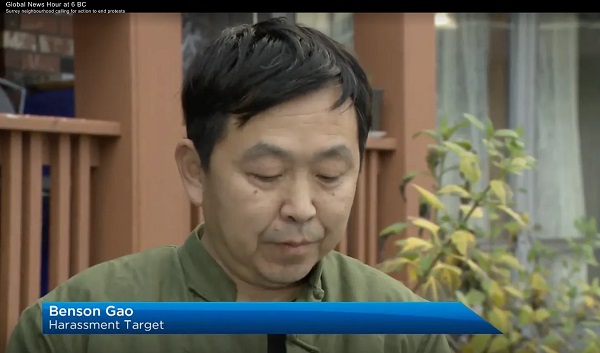
 espionage2 days ago
espionage2 days agoChinese-Owned Trailer Park Beside U.S. Stealth Bomber Base Linked to Alleged Vancouver Repression Case
-

 Daily Caller2 days ago
Daily Caller2 days agoUS Nuclear Bomber Fleet Shares Fence With Trailer Park Linked To Chinese Intel-Tied Fraudster
-

 Daily Caller2 days ago
Daily Caller2 days agoLaura Ingraham Presses Trump On Allowing Flood Of Chinese Students Into US
-
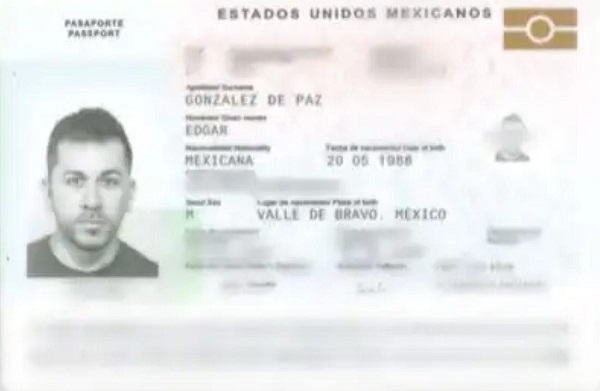
 Crime18 hours ago
Crime18 hours agoCBSA Bust Uncovers Mexican Cartel Network in Montreal High-Rise, Moving Hundreds Across Canada-U.S. Border
-

 Business2 days ago
Business2 days agoCarney’s Floor-Crossing Campaign. A Media-Staged Bid for Majority Rule That Erodes Democracy While Beijing Hovers
-

 Environment19 hours ago
Environment19 hours agoThe Myths We’re Told About Climate Change | Michael Shellenberger
-
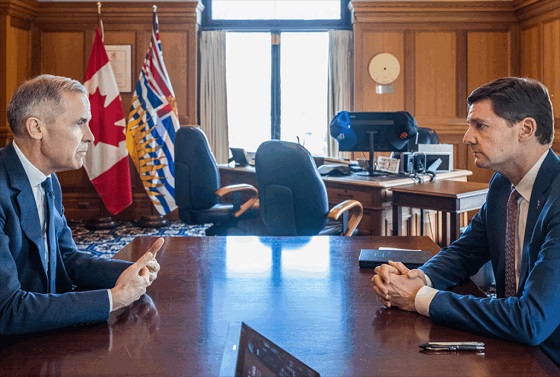
 Energy1 day ago
Energy1 day agoIt should not take a crisis for Canada to develop the resources that make people and communities thrive.
-
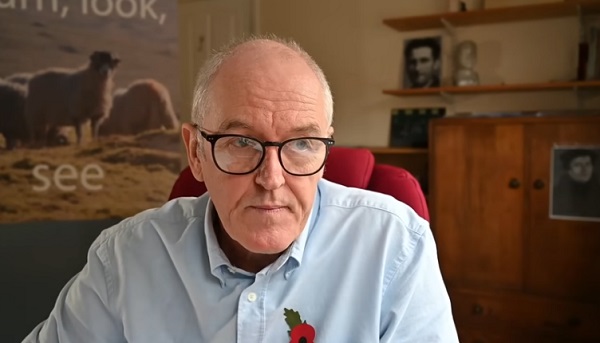
 Dr John Campbell1 day ago
Dr John Campbell1 day agoCures for Cancer? A new study shows incredible results from cheap generic drug Fenbendazole








